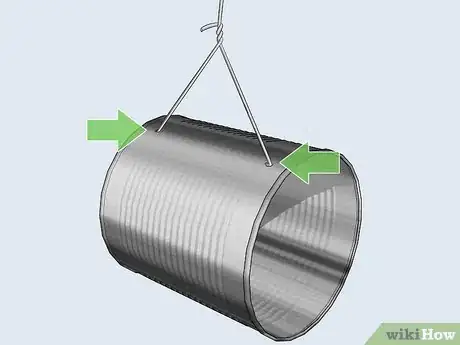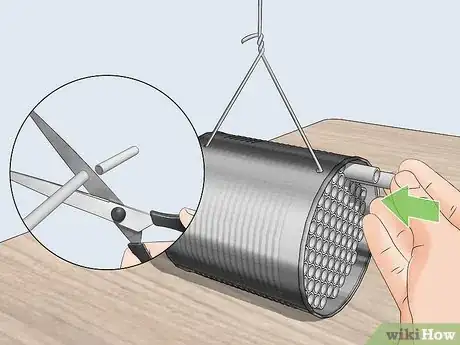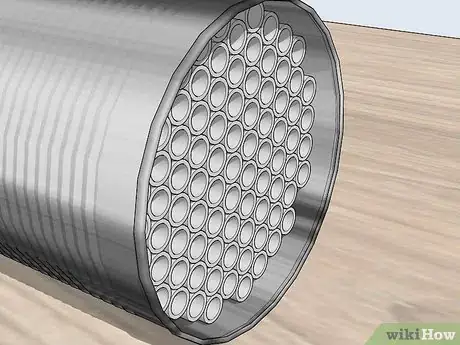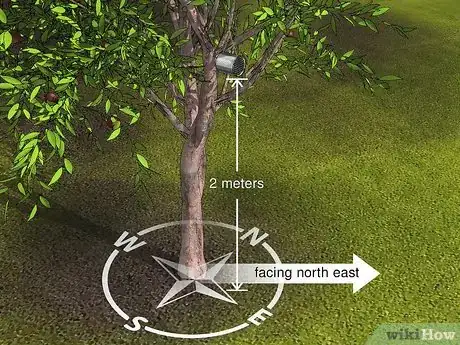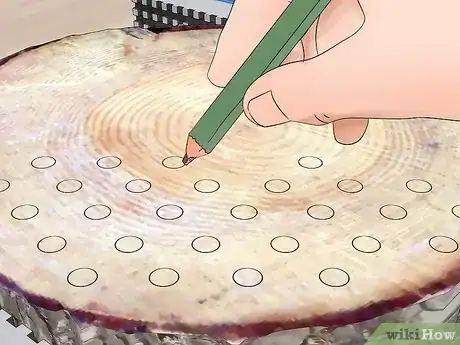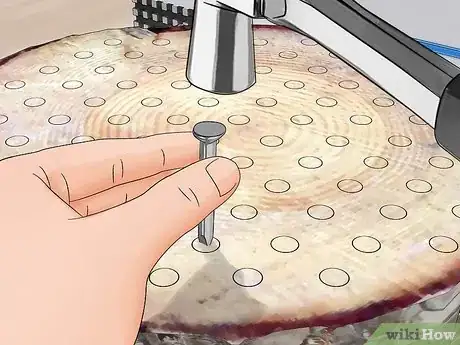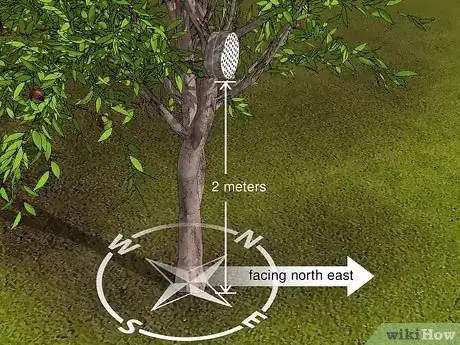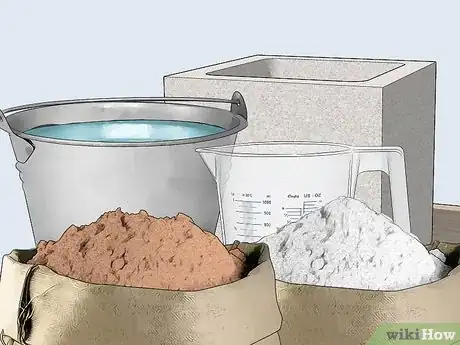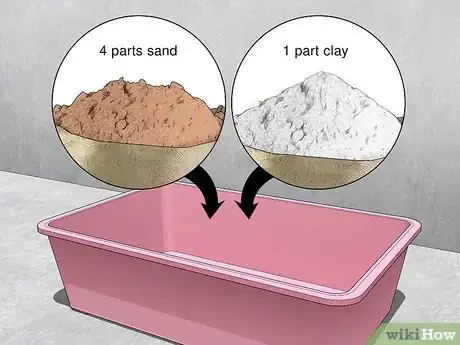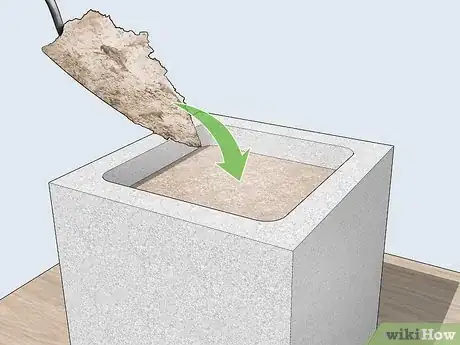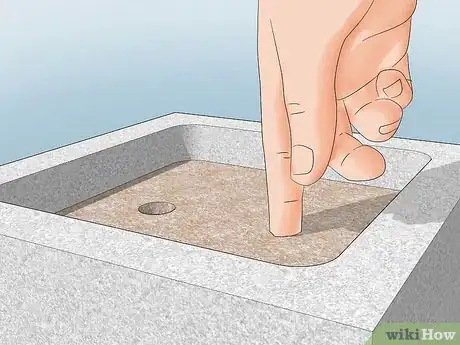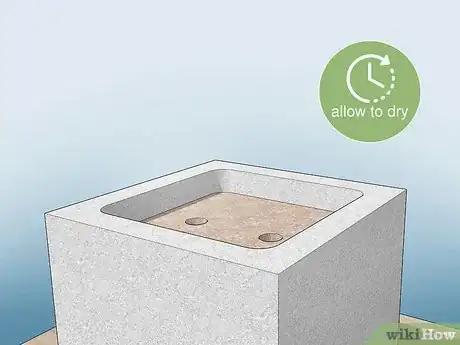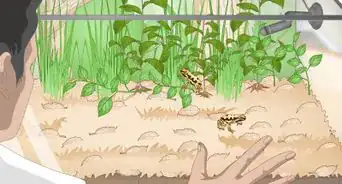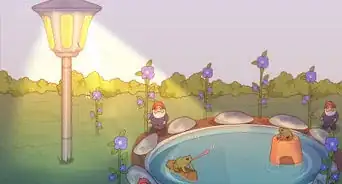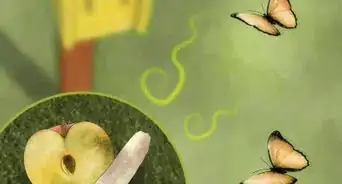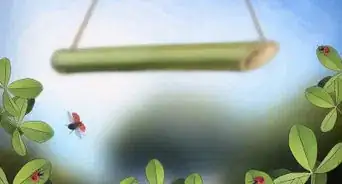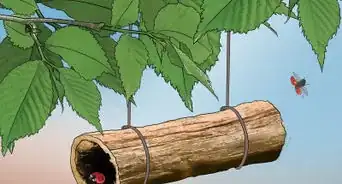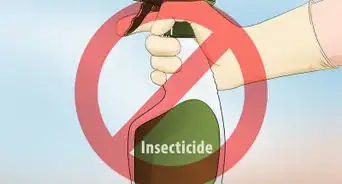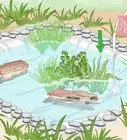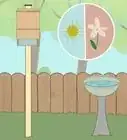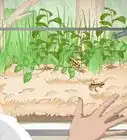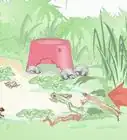wikiHow is a “wiki,” similar to Wikipedia, which means that many of our articles are co-written by multiple authors. To create this article, volunteer authors worked to edit and improve it over time.
This article has been viewed 10,271 times.
Learn more...
Bee hotels, also known as trap nests or Fabre's hives, are human-made nesting substrates that can be used as supplementary habitats for solitary bees. It's estimated that there are over 20,000 bee species worldwide and most of these are solitary species. These bees are different to the European honeybee, which is a social species; or bumblebees, which are semi-social. Most species of solitary bees can nest below ground in the soil or aboveground in cavities. Some species are opportunistic in that they make use of pre-existing burrows or cavities, others excavate their own. A good bee hotel uses a variety of materials to accommodate bees with different nesting requirements.
Steps
Fill an open container with reeds and stems
-
1Gather your materials:
- Cylindrical, waterproof housing, at least 10cm deep (e.g. PVC pipe, tin can, terracotta garden pot, ceramic cup/mug with handle, plastic bottle trimmed to a cylinder)
- Tubes (e.g. dried bamboo reeds, rolled newspaper or paper straws)
- Stems (e.g. dried pithy stems such as from trimming hedges or removing weedy shrubs like Lantana spp.)
- Fastening (e.g. string, wool or cable ties)
- Something to cut your tubes (e.g. scissors or secateurs)
-
2Make a small hole at the end of your housing and thread some fastening through it so that you can hang up your hotel later. Cups and mugs already have a handle so don’t need this step. Tie the string together in a loose bow until you’re ready to use it.Advertisement
-
3Take a tube/stem and place it inside, then cut it so that it’s just a little shorter than the length of the housing. It’s important to leave a gap between the entrance and your tubes/stems to protect them from rain. Use this first cut tube/stem as a template for cutting the remaining tubes/stems. You can make your own tubes from newspaper and glue by cutting strips of newspaper about the width of a ruler, gluing a thin line down one length, then rolling from one corner to the other on an angle using a long paintbrush or pencil.
-
4Make sure to pack the housing tight with enough tubes/stems so that they don’t fall out.
- Optional: Cover the entrance with wire mesh small enough to hold the tubes/stems in place but large enough to let bees in.
-
5Fasten the hotel, as level as you can, one to two metres above the ground in a sheltered area (e.g. under a tree) with lots of flowering plants. Face the hotel entrance to the north-east so it gets morning sun.
Drill holes in untreated timber
-
1Gather your materials:
- Untreated timber or logs (at least 12 cm long and 3.5 cm wide/high)
- Electric drill
- Drill bit (6mm and/or 8mm) long enough to make cavities 10mm deep
- Safety goggles and mask
- Hammer, nail, pencil and ruler (to make starter holes, for safety)
- Sandpaper
- Fastening (e.g. string, wire, cable ties, bracket and screws)
- Optional: Round wood file
-
2Secure your piece of timber, face up, so that it does not move when drilling holes (e.g. with a vice to a carpentry bench).
-
3Mark each position where you will drill your cavities with a pencil. Leave enough room between cavities (twice the width of your drill bit) to reduce the risk of your timber cracking.
-
4Hammer in the nails. Holding the nail carefully, gently hammer it a short depth into each pencil mark, then remove.
-
5Drill the cavities. Wearing your safety goggles and mask, align your drill bit with a starter hole and carefully begin to drill one of your cavities straight down into your timber. You may need to stop (turning off the drill) every now and then and tap any sawdust out of the cavity-in-progress to aid in drilling.
- Repeat this process for each marked cavity.
-
6Remove your timber from the vice and tap it upside down to dislodge any sawdust. Use a round wood file and sandpaper to remove any splinters from cavity entrances.
-
7Fasten the hotel, as level as you can, one to two metres above the ground in a sheltered area (e.g. under a tree) with lots of flowering plants. Face the hotel entrance to the north-east so it gets morning sun.
Build a cob block
-
1Gather your materials:
- Rectangular, waterproof housing, at least 12 cm deep (e.g. PVC pipe, recycled milk carton, terracotta pot, besser block)
- Filling (sandy loam and white ball clay)
- Water
- Cup or container for measuring
-
2In a bucket or large container, mix 4 parts sand with 1 part clay until you have enough mixture to fill your housing. For a 1L milk carton, which makes two hotels when cut in half, you will need 4 cups of sand and 1 cup of clay. For a pot or a besser block, you will need more.
-
3Add a little bit of water at a time while mixing, until it the mixture is wet enough to hold together when made into a ball. Usually no more than 1 cup.
-
4Pack the mixture into your housing (standing upright), leaving a small gap between the entrance and filling to protect the nest from rain.
-
5Make two shallow indents with your finger, a pencil or a paintbrush to act as starter holes for your bees.
-
6Wait for the mixture to dry (a few hours or days, weather depending).
-
7Place your bee hotel in a sheltered area with lots of flowering plants. Place it on top of something else to lift it off the ground a little, like a brick or stack of timber or tiles, so it doesn’t get too damp. Finally, turn the hotel to the north-east so it gets the morning sun.
Warnings
- Do not let children operate the drill⧼thumbs_response⧽
- Always follow safety instructions supplied by manufacturers of any tools used⧼thumbs_response⧽
- Do not move occupied bee hotels from one region to another. Species that are native to one region may become invasive in others or be unable to survive.⧼thumbs_response⧽
- Distance your hotels to reduce the spread of bee pests and pathogens⧼thumbs_response⧽

